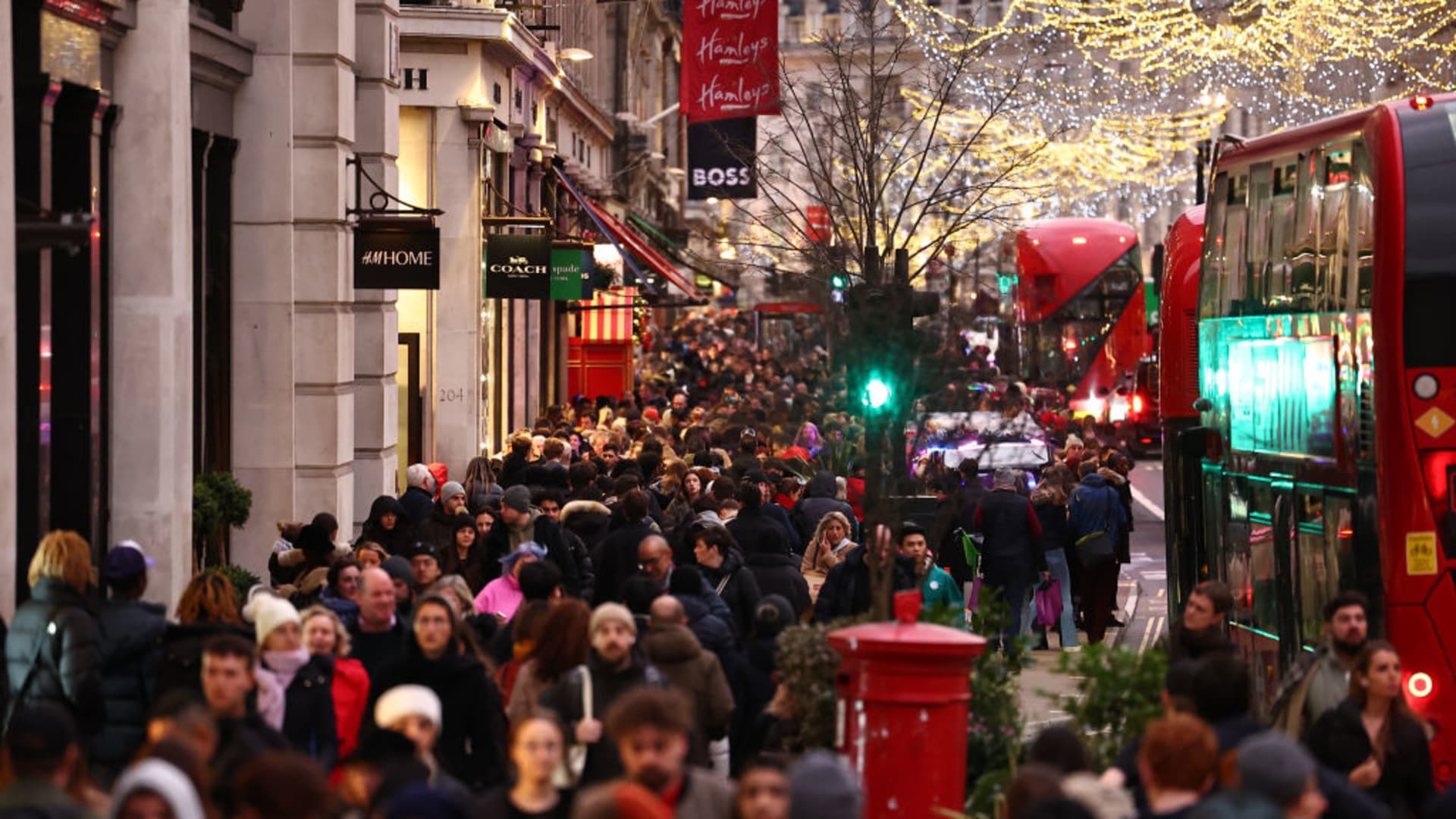Shoppers walk past shops on Regent Street on the final weekday before Christmas in London on December 22, 2023. Britain’s economy unexpectedly shrank in the third quarter and flatlined in the previous three months, official data showed Friday, raising fears of a recession before an election due next year. (Photo by HENRY NICHOLLS / AFP) (Photo by HENRY NICHOLLS/AFP via Getty Images)
Henry Nicholls | Afp | Getty Images
U.K. retail sales dropped significantly more than expected in December, in a sign that the economy may have entered a shallow recession in the second half of 2023.
The Office for National Statistics said sales volumes fell by 3.2% during the key trading month, after a 1.4% rise in November. Economists polled by Reuters had expected a fall of just 0.5%.
December marked the largest monthly decline since January 2021, when strict pandemic lockdown measures dampened demand. The ONS said people appeared to have done their Christmas shopping earlier than in previous years.
Volumes were 0.9% lower in the three months to December 2023, compared with the previous quarter.
It comes after U.K. gross domestic product for the third quarter was revised down to a 0.1% contraction, from a prior reading of no growth.
“Today’s release would subtract around 0.15 percentage points from real GDP growth in December, which increases the chances the economy may have ended 2023 in the mildest of mild recessions,” said Alex Kerr, assistant economist at Capital Economics.
Looking to the year ahead, Kerr said that the impact of higher interest rates on mortgage holders may lead to a further “modest decline” in real consumer spending in the first quarter. He added that the expected interest rate cuts from June and a fall in inflation would support a recovery in the second half of the year.
Trade body British Retail Consortium said that the figures “capped a difficult year for retailers” and showed that Black Friday sales ate into Christmas spending.
The December decline was sharpest in the retail of non-food items, which was down 3.9% after recording 2.7% growth in November. Food store sales were lower by 3.1%, following a 1.1% increase in the previous month.
Online sales showed slightly more resilience, dropping by 1.7% in December — bringing the share of online vs bricks and mortar sales rose from 26.6% to 27.1%.
A combination of poor December weather and Black Friday events likely contributed to the “torrid end” of the retail year, said James Smith, developed markets economist at ING, in a note.
He added, “In reality, the consumer backdrop is starting to improve and that’s hard to square with the scale of December’s decline. We suspect much of the loss will be recovered in January/February.”
A solid outlook for real wage growth, inflation declines and slightly higher consumer confidence will all support the recovery, he said.
